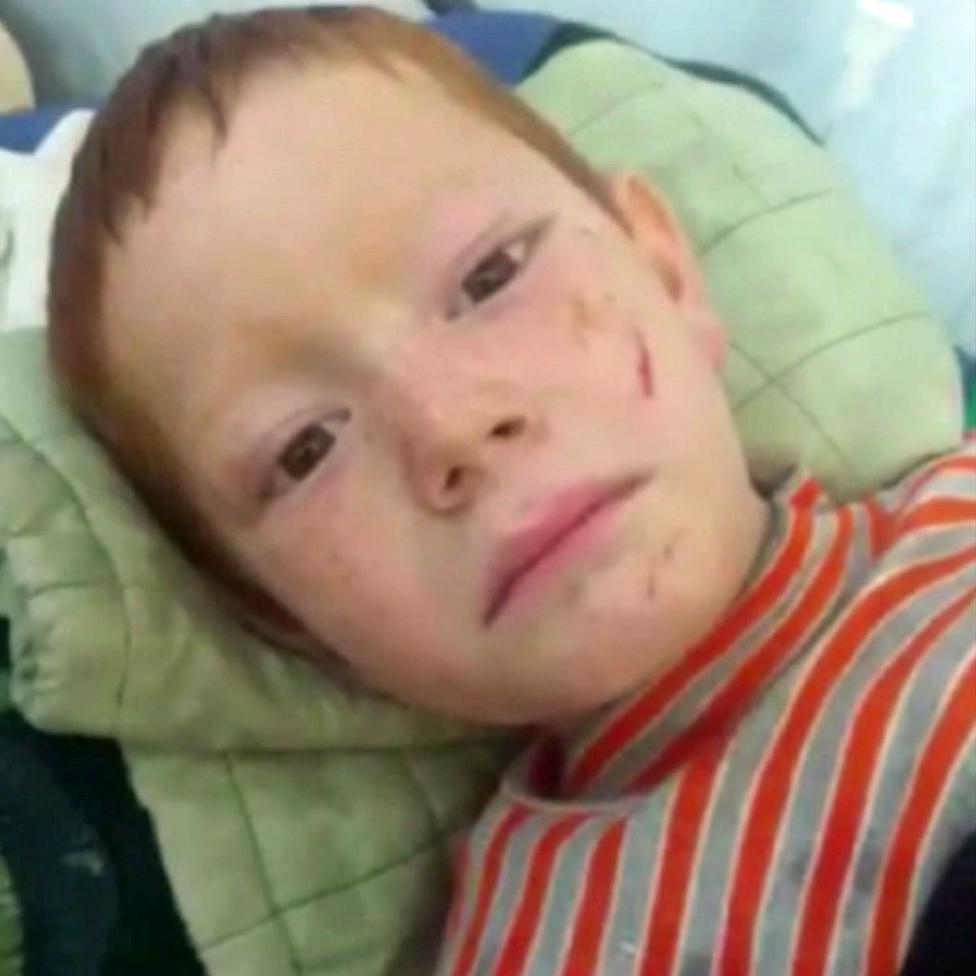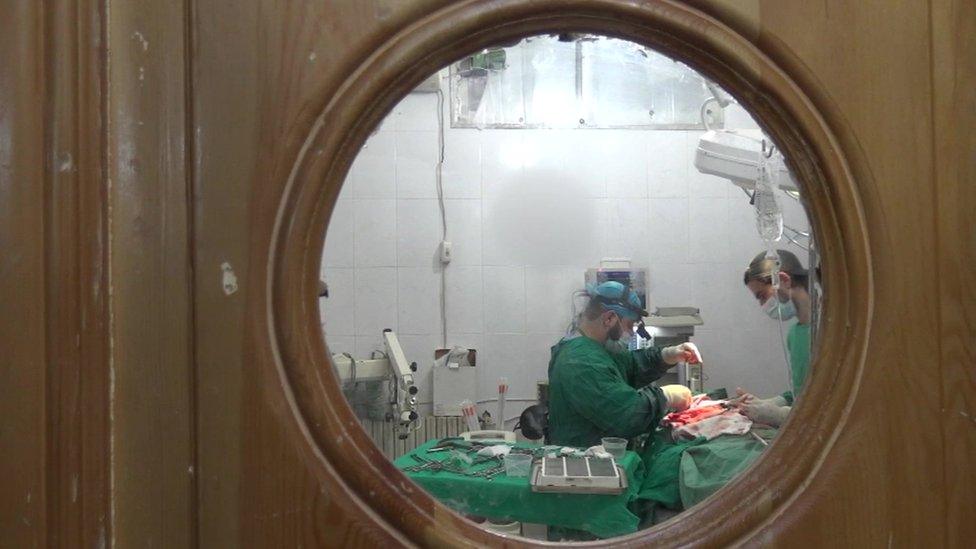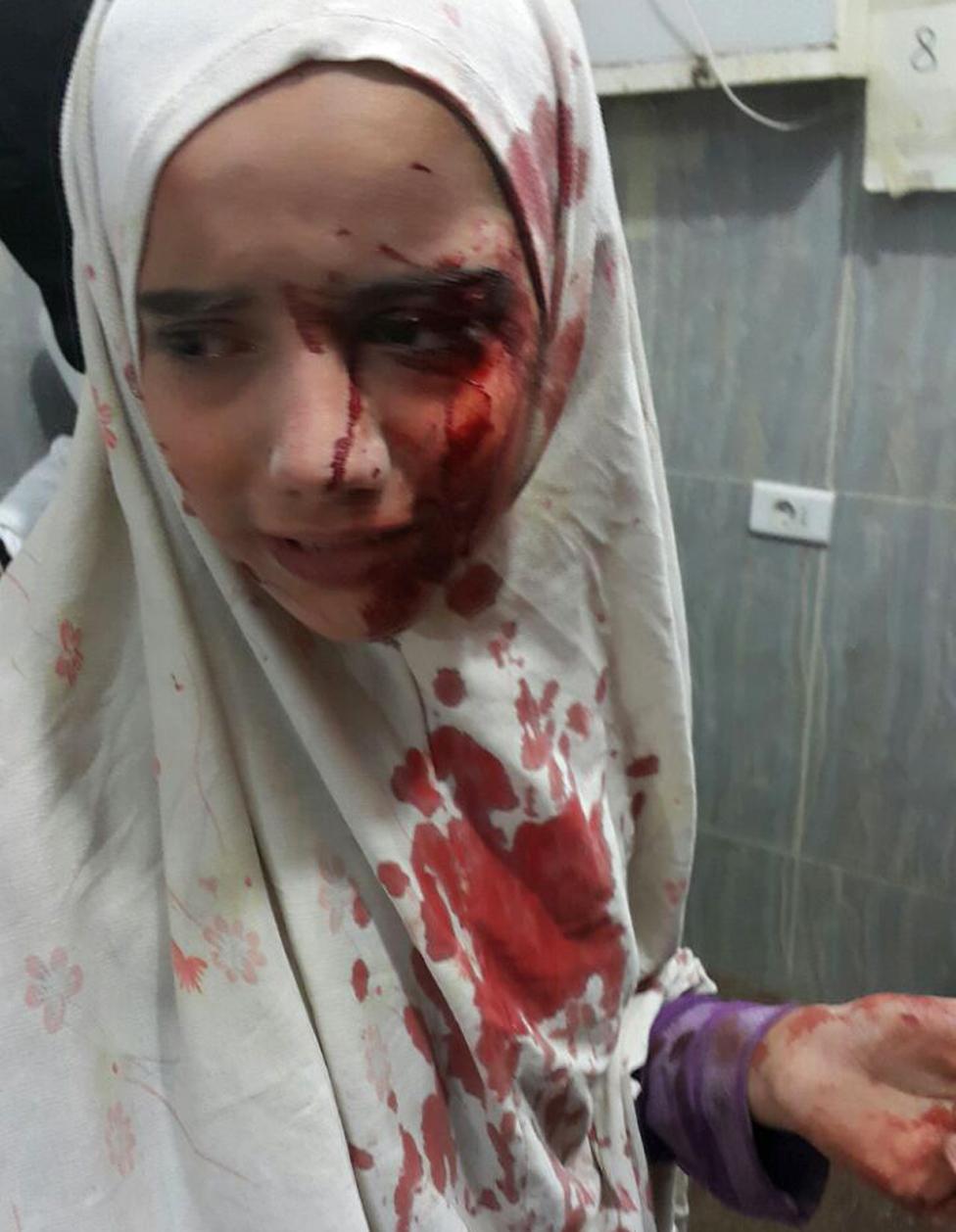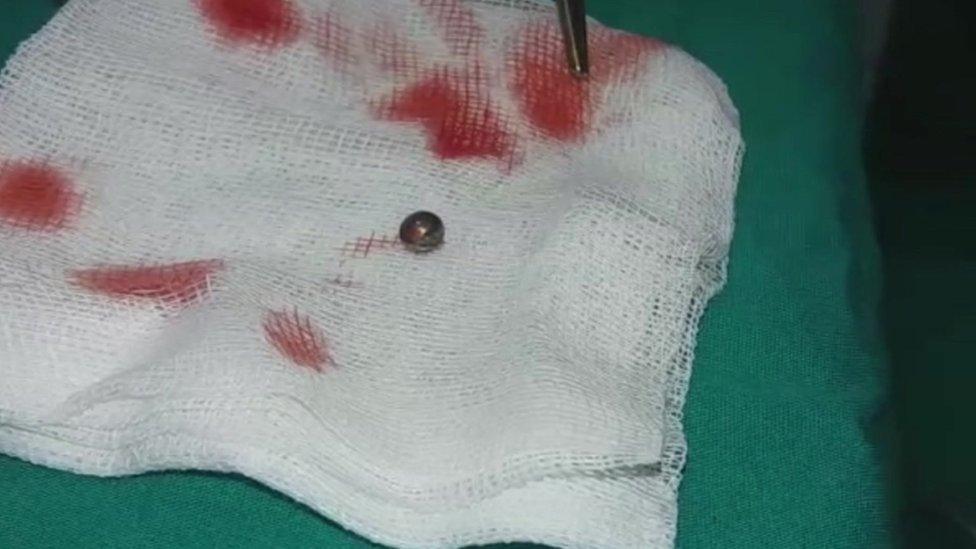Reporting Syria's war - the images you won't see
- Published
BBC Newsnight has obtained distressing footage from inside an Aleppo hospital
How do you report something you can't show people because it is judged too ghastly for them to see?
This issue hit me with both barrels between the eyes this week when I had to wrestle with a series of images from besieged Aleppo.
They had been taken by Syrian doctors in an underground hospital and forwarded to me by Dr David Nott, the pioneering war surgeon who has been using Skype to teach his colleagues over the internet how to, for example, rebuild a man's face.
I first covered war in 1988 and I've seen more than enough real horror with my own eyes.
But the Aleppo hospital pictures were grim beyond the saying of it. Be warned. What I must write and you will now read is a terrible litany of suffering.

This little boy has sustained an injury in his spine
They include a boy, so coated in cement dust I can't say whether he is alive or dead; a boy, dead; two boys, lying on the floor next to a drain because there are no beds left, both dead; a boy, alive, his face a river of blood; a boy, alive, holding up his broken arm; a boy, dead; a girl with ginger hair, dying.
A boy, his face white from dust apart from a smear of blood running from his eyes to his nose; the 17th, a baby girl, dying; a teenage girl in a white headdress, it and her face splotched with arterial blood; a dead infant; a father, covered in cement dust, dead, holding the arm of an infant, also dead, the infant headless.
Most of these images we cannot show you. The reason is simple: there is no watershed on the internet and you cannot put out these kind of images without causing people, especially children, real upset.
I understand this completely.

Bombs have badly damaged the hospital in Aleppo
I returned from Rwanda and Burundi in 1988 from reporting a massacre for the Observer, and back in London described a machete wound to a friend, who wrote TV comedies. His face went green.
I realised that from then on, I should be careful about what I said about the details of man's inhumanity to man; still more about what I showed via image and video.
But then the other thing. Something truly horrible is happening to the people of eastern Aleppo.
They rose up against Bashar al-Assad five years ago. They are not with Isis but against them; they seek a third path between the tyrant and the fanatics.
They are trapped inside a siege. They have nowhere to hide. So when the cluster bombs fall - the ones that don't go off are marked Shoab 0.5m in Russian, so we have a pretty good idea who is dropping them - they kill.
On our BBC Newsnight film we did show something of what happens when a cluster bomb lands on a city packed with children.
The doctors in the underground hospital filmed one little boy with a ball bearing from a cluster bomb in his spine; a second with a ball bearing that had entered the back of his head and lodged in the skull just behind his nose.

A girl waits for treatment at the hospital in eastern Aleppo
We did show blood on the floor of the hospital - there is no time to get rid of it and, since the waterworks has been bombed, no good water supply. We did show neurosurgery taking place on the floor because no beds were free.
But we didn't show what often happens: that cluster bombs kill children. The danger is that, for fear of causing upset, we end up sanitising war.
This matters because Western policy on Syria is in deep trouble. Assad's strategic narrative - it's a choice between me or Isis - is becoming more and more true.

This ball bearing from a cluster bomb was removed from a patient's liver
The danger for Western security is that policy may drive good people into the hands of Isis because they hate Assad so much. But if people in the West do not see the reality on the ground because media organisations don't want to cause upset, then the story gets obscured or buried.
Hollywood hoovers up the dreadful dust of war. In multiplex movies you see machine-guns spit and shells fall - but not people with no eyes because of the percussion effect from high explosives; you see heroism, but not children with ball bearings in their spine.
Assad and Russia say they are fighting terrorism. None of the dead children pictured on my phone and indelibly in my memory are terrorists.
Correcting these falsehoods - both benign and malign - is the job of journalism. Right now we are not showing you the full horror of the war in Syria.